
Vitoria-Gasteiz, also alternatively spelled as Vittoria in old English-language sources, is the seat of government and the capital city of the Basque Country and of the province of Álava in northern Spain. It holds the autonomous community's House of Parliament, the headquarters of the Government, and the Lehendakari's official residency. The municipality—which comprises not only the city but also the mainly agricultural lands of 63 villages around—is the largest in the Basque Country, with a total area of 276.81 square kilometres (106.88 sq mi), and it has a population of 253,093. The dwellers of Vitoria-Gasteiz are called vitorianos or gasteiztarrak, while traditionally they are dubbed babazorros.

Cuenca is a city and municipality of Spain located in the autonomous community of Castilla–La Mancha. It is the capital of the province of Cuenca.
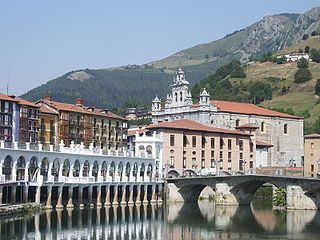
Tolosa is a town and municipality in the Basque province of Gipuzkoa, in northern Spain. It is located in the valley of the river Oria, next by Uzturre, a local mountain topped by a white cross.
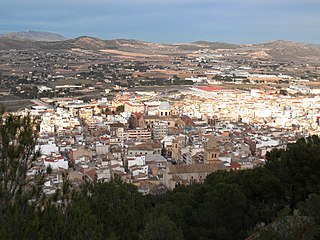
Yecla is a town and municipality in eastern Spain, in the extreme north of the autonomous community of Murcia, located 96 km from the capital of the region, Murcia.
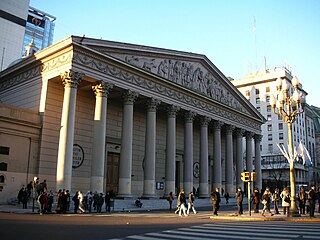
The Buenos Aires Metropolitan Cathedral is the main Catholic church in Buenos Aires, Argentina. It is located in the city center, overlooking Plaza de Mayo, on the corner of San Martín and Rivadavia streets, in the San Nicolás neighbourhood. It is the mother church of the Archdiocese of Buenos Aires and the primatial church of Argentina.

Spanish Baroque is a strand of Baroque architecture that evolved in Spain, its provinces, and former colonies.
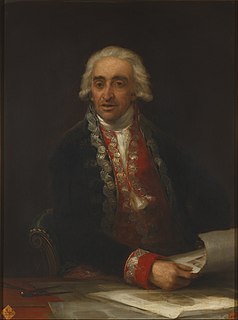
Juan de Villanueva was a Spanish architect. Alongside Ventura Rodríguez, Villanueva is the best known architect of Spanish Neoclassicism.

The Catedral de Nuestra Señora de Guadalupe is the cathedral for the Roman Catholic Diocese of Ponce located in downtown Ponce, Puerto Rico. The cathedral lies in the middle of Ponce's town square, known as Plaza Las Delicias, located at the center of the Ponce Historic Zone. For its historic significance, the cathedral was listed on the National Register of Historic Places in 1984. It is the seat of the Bishop of Ponce, currently Rubén González Medina.
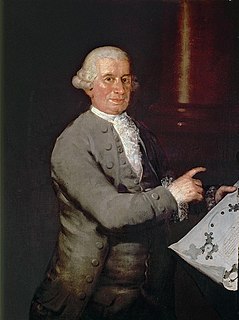
Ventura Rodríguez Tizón was a Spanish architect and artist. Born at Ciempozuelos, Rodríguez was the son of a bricklayer. In 1727, he collaborated with his father in the work at the Royal Palace of Aranjuez.

The Nuestra Señora de Loreto Church in the historic center of Mexico City was the last major church constructed during the colonial period. Constructed between 1806 and 1819, the church tilts significantly to one side due to being constructed of stone of two different weights. Loreto is one of a number of churches in the historic district that the Archdiocese of Mexico says is in imminent danger of being lost due to structural damage from the uneven sinking. In front of the church is a plaza named after the church which used to be the site of Mexico City’s first synagogue.

The Royal Basilica of Saint Francis the Great is a Roman Catholic church in central Madrid, Spain, located in the neighborhood of Palacio.
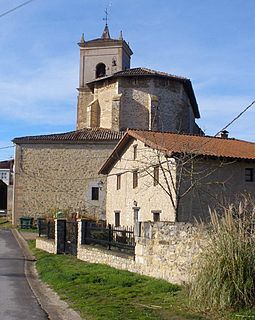
Aberásturi is a hamlet and concejo located in the municipality of Vitoria-Gasteiz, in Álava province, Basque Country, Spain. It is located in the eastern part of the municipality, some 8 km (5.0 mi) from the city center, along the Ertekaberri river at the foot of a mountain and on a hillside.
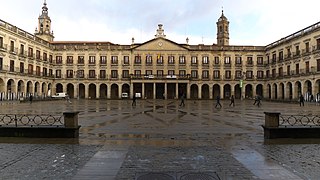
Plaza de España or Plaza Nueva is a square in Vitoria-Gasteiz, Basque Country, Spain. It was declared Bien de Interés Cultural in 1984.

Plaza de la Virgen Blanca is one of the oldest meeting points in Vitoria-Gasteiz in the Basque Country of Spain. In the middle of it there is the monument to La batalla de Vitoria a battle which took place in the city in 1813 during the Napoleonic wars.

The architecture of Madrid has preserved the look and feel of many of its historic neighbourhoods and streets, even though Madrid possesses a modern infrastructure. Its landmarks include the Royal Palace of Madrid, the Royal Theatre with its restored 1850 Opera House, the Buen Retiro Park, the 19th-century National Library building containing some of Spain's historical archives, a large number of national museums, and the Golden Triangle of Art located along the Paseo del Prado and comprising three art museums: Prado Museum, the Reina Sofía Museum, and the Thyssen-Bornemisza Museum, which completes the shortcomings of the other two museums. Cibeles Palace and Fountain have become the monument symbol of the city.

The festival of San Prudencio, in the city of Vitoria-Gasteiz, Álava, Spain, is held around the saint's feast day. Due to its popularity, the city organizes a number of activities. The festival begins on 27 April in Plaza de la Diputación, where a stage is prepared for the traditional Basque dance groups.

Plaza Nueva is a public square in the city center of Seville, Spain, which contains Seville city hall. The land the plaza is built on was formerly part of the San Fernando convent from 1270-1840. The land was later acquired by the local government and converted into a public square. The plaza was completed in 1856.

Torcuato José Benjumeda y Laguada was a Spanish architect. A disciple of Torcuato Cayón, he was one of the most important Neoclassical architects in Andalusia, designing several of the most prominent buildings in Cádiz. These include the Royal Prison, the Church of St. Peter and St. Paul and the Ayuntamiento.

Ramón María de Urbina y Gaytán de Ayala, 2nd Marquess of la Alameda was a Spanish politician and nobleman. He served as mayor of Vitoria and as Deputy General of Álava.



















